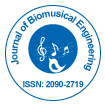Review Article
Intuitive Navigation in Computer Applications for People with Parkinsons
Matthew H Woolhouse* and Alex Zaranek
Digital Music Lab, School of the Arts, McMaster University, Canada
- Corresponding Author:
- Matthew H Woolhouse
Assistant Professor of Music Cognition and Music Theory
School of the Arts, McMaster University
1280 Main St. W., Hamilton, Ontario L8S 4M2, Canada
Tel: 905 525 9140
E-mail: woolhouse@mcmaster.ca
Received Date: March 09, 2016; Accepted Date: April 29, 2016; Published Date: May 02, 2016
Citation: Woolhouse MH, Zaranek A (2016) Intuitive Navigation in Computer Applications for People with Parkinson’s. J Biomusic Eng 4:115. doi:10.4172/2090-2719.1000115
Copyright: © 2016 Woolhouse MH, et al. This is an open-access article distributed under the terms of the Creative Commons Attribution License, which permits unrestricted use, distribution, and reproduction in any medium, provided the original author and source are credited.
Abstract
Research is reported concerning the development of intuitive navigation within a music-dance application designed for people with Parkinson’s disease (PD). Following a review of current research into the use of motion-sensing cameras in therapeutic contexts, we describe the method by which a relatively low-cost motion-sensing camera was coupled with a rotatable function menu. The rotatable element of the system enabled navigation of the entire menu using only two, readily performable and distinct gestures: side-swipe for function browsing; down-swipe for function selecting. To aid acceptance amongst the target audience, people with PD (who tend to be relatively elderly), the rotatable function menu was rendered as a ballerina jewelry box, with appropriate texturing and music-box style musical accompaniment. Menu implementation employed a game engine, and a software development kit allowed direct access to the camera’s functionality, enabling gesture recognition. For example, users’ side-swipe gestures spun the jewelry box (as if interacting with an object in the real world) until a desired function, presented on each facet of the box, was forward facing. Also described are features and settings, designed to ensure safe and effective use of the application, and help maintain user motivation and interest.

 Spanish
Spanish  Chinese
Chinese  Russian
Russian  German
German  French
French  Japanese
Japanese  Portuguese
Portuguese  Hindi
Hindi